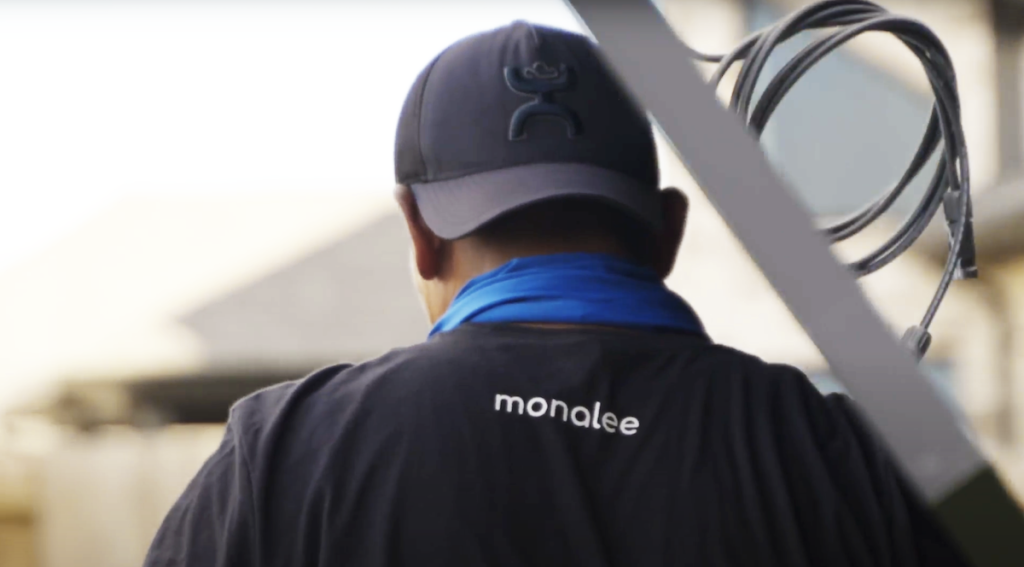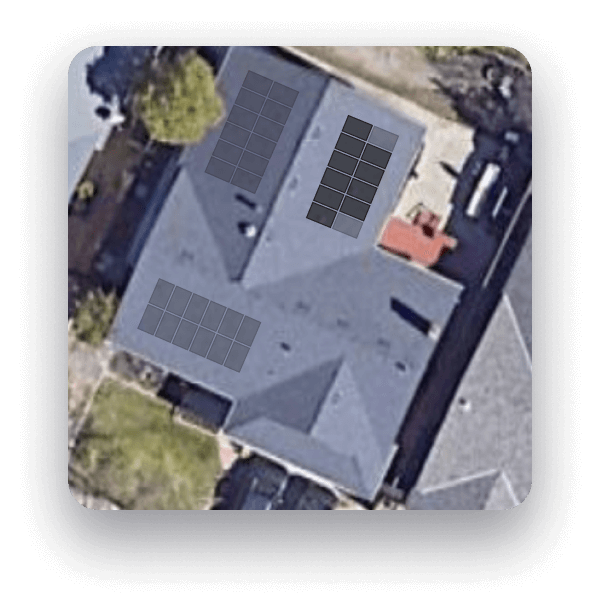From top-tier equipment to smart add-ons, here's how to make the most of going solar.
Harnessing the sun’s rays is one of the smartest investments you can make for your home and the planet. But to truly maximize your solar potential, it’s essential to plan carefully and make informed choices.
From selecting the optimal roof placement to choosing high-quality panels and designing an efficient system, every decision impacts your energy savings and sustainability.
Whether wanting to reduce your electricity bills, enhance your home’s aesthetics, or create a greener future, these tips will help you get the most out of your solar installation.

1. Consider the navigational direction of your roof.
One of the first things our proprietary software determines is the navigational direction your roof faces. A roof in the northern hemisphere that faces south will get the most sun and therefore, will be the most efficient. The opposite is true if you live in the southern hemisphere; roofs facing north will capture the most sunlight.
While it’s optimal to have south-facing solar panels for homes in the northern hemisphere, that doesn’t mean your system won’t be efficient if it faces a different direction. East and west-facing solar panels have output rates of around 85% compared to the potential of 100% for south-facing panels. East-facing solar panels will capture the most sunlight in the morning hours and west-facing panels capture more in the afternoon.
North-facing solar panels in the northern hemisphere produce considerably less electricity and are the least optimal placement. However, if you live in an area with year-round sunshine–say, California or Florida–it might still be enough to fully offset your electricity bill.

2. Account for seasonal and daily sun movement.
When it comes to solar, it’s the number of hours of sun–rather than how hot or cold it is outside–that matters. This means that a few hours of sunlight in the summer is just as powerful as a few hours of daylight in the winter months.
That said, in summer, you’ll have more hours of sunlight than during fall and winter. If you’ve invested in a solar battery, you can store excess energy produced during the summer months and use it later in the year or whenever your system doesn’t produce enough electricity to power your home fully.
Believe it or not, solar systems can capture sunlight even on cloudy days and when it rains. Rain is a natural cleaning agent for your panels because it washes away leaf buildup that may have accumulated underneath and around your panels. All in all, you’re looking at maybe a 5-percent decrease in performance when rain, wind, or clouds interfere.

3. Invest in solar add-ons for improved aesthetics.
Switching to solar energy is a smart investment for your wallet and the environment, but it also opens up exciting design possibilities for your home.
Black panels usually cost more than blue panels but are generally more efficient, which translates to higher long-term savings. They also tend to look more visually appealing from afar, as black gets along with every color.
There are other ways to incorporate solar panels on your roof without them drawing too much attention. Assuming this is an optimal placement for efficiency, you can place some solar panels on the back roof where they are less visible from the front. You can also choose areas that match the shape of your roof sections so that panels look like a natural extension of your roof.
Solar add-ons can help improve the aesthetics of your solar system. Solar skirts are frame attachments that conceal the lower edge of the solar array. It’s effective in covering any visible gaps and for hiding cables or mounting hardware. Rail-free mounting systems and hidden fasteners lessen the appearance of hardware while attic runs eliminate the appearance of electrical conduit.

4. Conduct a home energy audit to identify inefficiencies.
Before switching to solar, it can be beneficial to conduct a home energy audit to understand where your home’s energy efficiency is lacking.
During an audit, professionals check how well your home is insulated, whether there are any air leaks and the efficiency of your bigger appliances such as washing machines and refrigerators.
Conducting a home audit can be incredibly helpful in determining the most efficient solar design for your home. Several factors should be considered, including the square footage of your home, your personal energy needs, your area’s climate and weather conditions, and the navigational direction of your roof.

5. Install high-quality solar equipment.
In the world of solar, not all equipment is created equal. Remember that while solar panels are a significant investment at first, they ultimately pay for themselves. This is especially true with high-grade equipment from trusted manufacturers.
When shopping around, pay close attention to a solar panel’s rate of degradation. The average degradation rate is 0.50% across all solar panels. That means you could still expect your solar output to be about 89% of its original output after 25 years. Tier One solar panels have a rate of 0.30% degradation year over year, while Tier Two has 0.50% and Tier Three has 0.80 percent.
At Monalee, we use LONGi 400w solar panels. LONGi panels feature advanced cell technology and high-performing modules and withstand high snow and wind conditions. Monalee homeowners also benefit from LONGi’s 25-year warranty for materials and processing and a 30-year warranty for extra linear power output.

Final thoughts
To maximize your solar investment, consider key factors like roof orientation, seasonal sun patterns, and high-quality equipment. South-facing roofs in the northern hemisphere (or north-facing in the southern hemisphere) capture the most sunlight, but east- and west-facing panels can still be highly effective. To enhance aesthetics, consider sleek black panels, discreet placements, or add-ons like solar skirts and hidden fasteners.


























